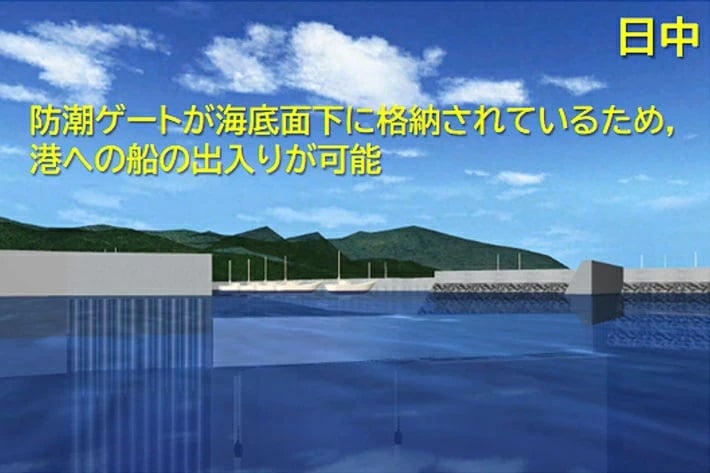Japan faces the challenge of safeguarding its important coastal assets from the destructive forces of tsunamis. Movable barrier systems offer coastal towns some protection from the destructive forces of tsunamis. The system consists of gates that rise from the seafloor to protect ports from tsunamis, storm surges, and high waves.
However, during natural disasters, power outages may disrupt the electricity needed to operate the gate.
To address the concern of power outages during natural disasters, researchers from the Tokyo Institute of Technology have proposed a self-powered movable seawall system (SMS). The system utilizes microtidal energy to operate gates that protect ports from tsunamis, storm surges, and high waves.
The proposed system consists of gates placed at the port entrance designed to close during periods of port inactivity, such as nighttime or holiday seasons. When the gates are raised, the differences in water levels between the inside and outside of the port generate electricity, which is then stored and used for subsequent gate operations.
This innovative solution could provide a reliable and sustainable source of power for the movable barrier system, ensuring the protection of Japan’s coastal assets during emergencies.
Japan’s extensive coastline is not suitable for large-scale tidal power generation due to the small tidal ranges in the area. However, the SMS system harnesses microtidal amplitudes at the sea level, ranging from 10 cm to 150 cm during spring tides.

The SMS system has a series of gates, each with a 30 cm gap, that work smoothly without interaction. The system also includes small power generation turbines housed within the gaps between the gates. These turbines have one propeller per 50 cm interval vertically, providing an efficient way to generate power from the ocean.
Researchers tested the system’s feasibility in Japanese ports, where it operates for eight hours a day, to determine if it can generate enough electricity to restore gates under the seafloor after a tsunami alert. The study identified 9 highly feasible, 14 feasible, and 33 unfeasible locations out of 56 assessed ports across Japan. It also identified 20 feasible locations along Japan’s western coast, which is vulnerable to earthquakes and tsunamis.
These seismic events have the potential to trigger tsunamis, making the proposed SMS system a promising protective measure for these ports and their hinterlands.
The proposed system not only protects critical infrastructures from tsunamis but also provides emergency power to enhance their resilience during disasters. Integrating disaster prevention with renewable energy is a great way to ensure sustainability and efficiency in the face of such calamities.
“To our knowledge, there is yet no system in the world that uses movable seawalls to generate electricity and then uses that electricity to operate the system itself. In this sense, SMS is a completely new concept,” says Professor Hiroshi Takagi from Tokyo Institute of Technology.
The researchers envision the SMS system as a global safeguard for ports against natural disasters, rising sea levels, and extreme weather, including coastal floods.
“If the technology of the proposed movable tsunami barrier, under the harsh disaster conditions in Japan, can be firmly established through this research, there is no doubt that a day will come when this technology can be exported and deployed overseas as a groundbreaking disaster prevention technology,” Prof. Takagi concludes.
